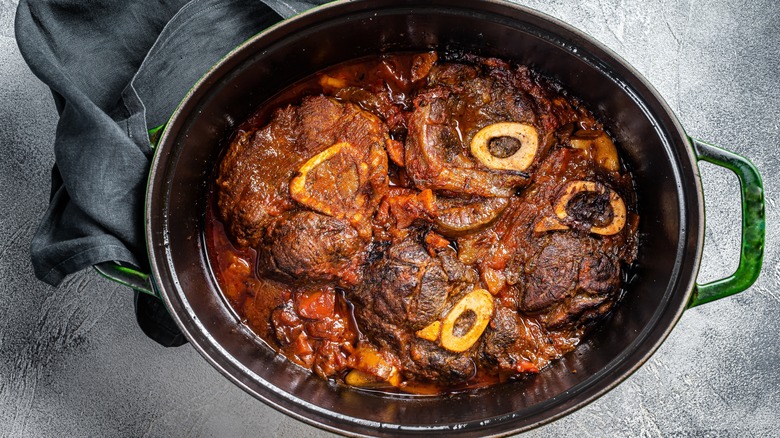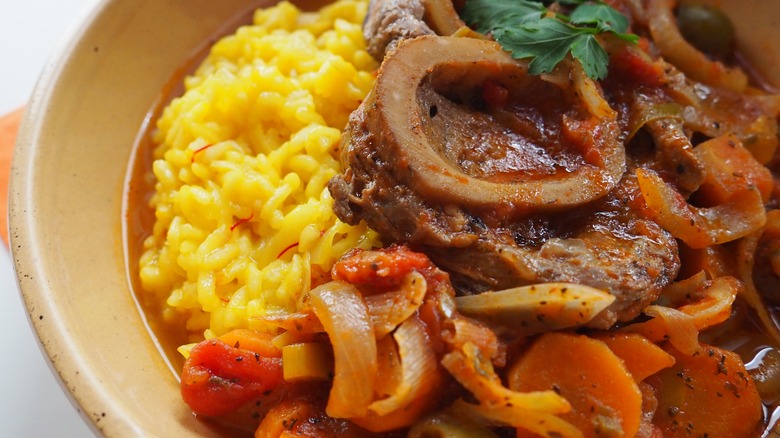The Biggest Mistake To Avoid When Making Osso Buco
Northern Italy's Lombardy region — particularly the city of Milan — is known for some of the nation's most iconic foods, including polenta, risotto, gorgonzola, and the famous veal Milanese. Another equally famous Milanese dish is osso buco, featuring veal shanks braised in a spiced white-wine broth until melt-in-your-mouth tender and bursting with flavor. Braising is a slow and wet method that cooks tough, sinewy cuts of meat until they fall off the bone, so you might be surprised to hear that the best way to prepare meat for braising requires a dry cooking method.
Tasting Table consulted an expert chef to discuss the proper protocol for making osso buco. Jasper J. Mirabile Jr. is chef and owner at Jasper's Restaurant, an authentic family-owned Italian restaurant in Kansas City, Missouri, that features osso buco on its seasonal menu. Chef Mirabile opines that "the biggest mistake cooks make when preparing osso buco is not browning the shanks enough."
Browning refers to a dry cooking method that sears the meat on a super hot surface to create a Malliard reaction in which the proteins and sugars in the meat interact to produce its namesake hue. Browning instills depth of flavor and a textural contrast. Whether you use veal or beef for osso buco, browning the shanks will enhance their umami richness and make for a more appealing presentation. Even though you want the meat to melt in your mouth, bits of crispy, browned crust will be a welcomed textural compliment.
Tips for mouthwatering osso buco
Chef Jasper Mirabile Jr. elaborates on the best way to brown shanks for osso buco: "I lightly dust with flour and then sear the shanks on all sides until they have a good caramelized crust." A light coating of flour will help seal in your meat's juices and also speeds up the browning process. It'll also keep the shanks from sticking to the skillet.
Any browned bits left behind are welcomed flavor enhancers for the veggies you'll fry using the same skillet or Dutch oven after removing the shanks. Osso buco has two main recipes with the prominent difference being the addition of tomatoes or tomato puree. Osso buco bianco is the older, more traditional recipe that uses cinnamon, anchovy paste, and bay leaves while osso buco alla Milanese adds chunks of carrots, celery and onion to a cooking liquid with broth, tomatoes, and wine.
While you can enjoy osso buco over cheesy polenta or creamy mashed potatoes, the traditional accompaniment is risotto, another iconic dish from the Lombardy region. Risotto Milanese is the most popular osso buco pairing, with its comforting rich, creamy texture and earthy, aromatic flavor from the shallots and saffron. The finishing touch that no osso buco should go without is a sprinkling of freshly ground gremolata, a mixture of lemon zest, parsley, and garlic.

